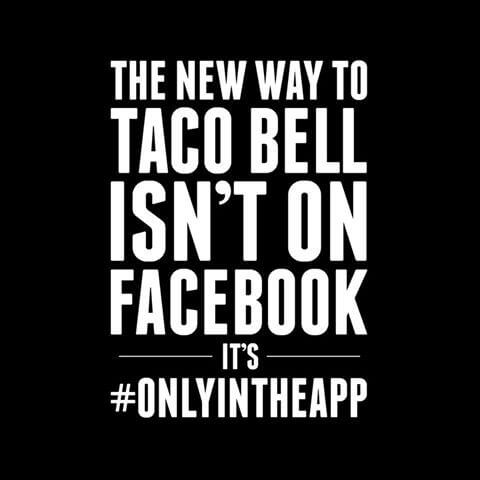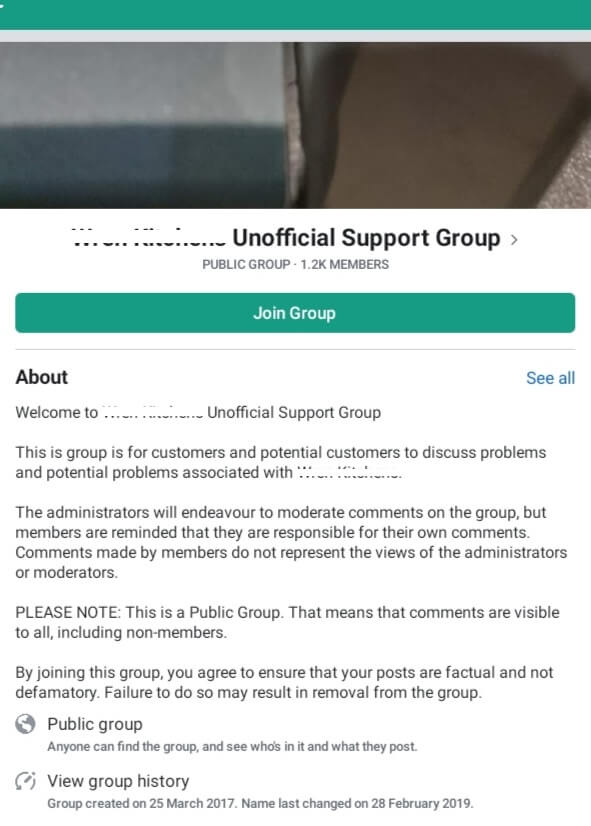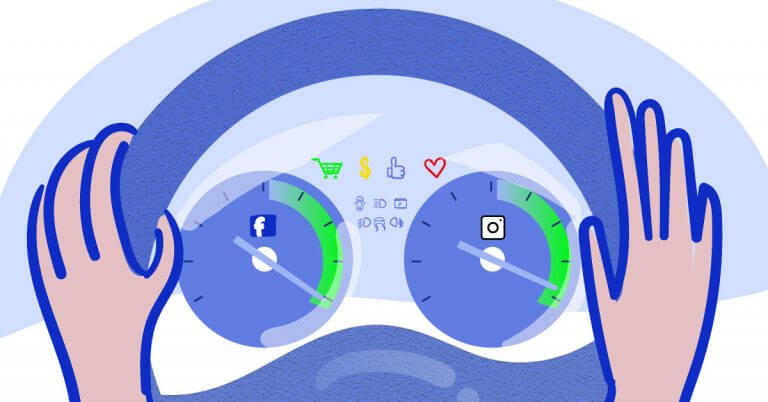You would be hard pressed to find a business nowadays that doesn’t look to make a splash online. Those working on their online presence are probably well aware of the benefits they’re after. But do they know how to properly create and employ social media KPIs?
We know it’s important: over the last twelve months, the number of social media users has grown by more than a quarter of a billion people. That’s an extra 250,000,000 people to reach through popular platforms. And 46% of the world’s population is now on social media channels. If your business isn’t, it’s high time you caught up.
We don’t always know how to measure value on social media. Many marketers say they struggle to find accurate data to describe the impact of their social media campaigns. Often the issue lies within the strategy, which needs constant updating in order to gauge effectiveness across different channels. Knowing what metrics to look at and using them to tailor your tactics is really the way to win on social media.
If you’re looking to collect relevant data, setting smart key performance indicators (KPIs) is the way to go. Understand metrics and use them to inform an agile marketing strategy that sings for your company.
Customers now often demand a personalised experience when they engage with a brand and there is scarcely a better medium for this than social media. Here businesses get the chance to shape a customer journey from its very beginnings all the way to a proactive, solid B2C relationship.
Always remember that a company that talks to its audience is more likely to build trust and gain loyal customers. This, ultimately, is the aim. You don’t just offer a better product or service than your competitors: you listen and respond to your target audience.
How we should think about KPIs for social media
What are key performance indicators, really? Well, the name is pretty self-explanatory. They are guidelines by which you will measure your success. For example, if you decide to include conversions in your KPIs, you will want to decide what number of conversions signifies satisfactory performance – and that number will be your social media KPI.
Therefore, KPIs are instructive. Aligned with solid social media strategies, these metrics should be tied to particular objectives. Your ability to achieve KPIs – or only succeed to a certain extent – can help you define benchmarks for future strategies.
You have a range of objectives – and KPIs – to choose from, but for most businesses the following questions are key:
- How do you expand your online reach?
- How do you boost engagement?
- How do you improve conversion rates?
- How do you improve your brand image and user sentiment?
We’re only going to brush over vanity metrics here – the volume of likes and tweets does not tell us exactly how much profit a campaign is generating. And the ultimate business goal is, of course, to make money. In a nutshell, we’re trying to analyse how much each click, every impression, and every lead costs.
Armed with this knowledge, a company can check business goals against the results of their social media outreach. Effective strategies will see the cost per conversion decrease over time – and this, ultimately, is the goal of every campaign.
Let’s dive into details and see which KPIs you need to be looking at and why.
How to Track Social Media KPIs
Engagement
Your efforts should begin with social media engagement metrics. The total number of people who have liked, retweeted, and shared your content is a vital measure of effectiveness. High engagement rates are an important catalyst for growth, especially on Facebook and Twitter where the algorithm rewards popular posts with better visibility on news feeds.
Having a wide reach with low engagement shows potential to improve the message going out there. Social media marketing requires you to interest your target audience by offering them content they find valuable. The way to generate more leads and find organic growth is to keep these people engaged.
A glorious example is evident in Taco Bell’s award-winning campaign, where the fast-food giant blacked out its social media channels to promote the launch of a mobile payment and ordering app. This stunt proved a success and soon after launch, the app rose to #1 spot in the food category of Apple’s app store, proving how social media can contribute to a vital KPI (e.g. successful marketing launch).

Also, watch your mentions
Research by Twitter indicates that 77% of users are likely to feel positive about a brand when their tweet is replied to. This is the entire point of a social media presence: to start a relationship with potential customers – and, in many cases, this means having a conversation. There is hardly a better stimulus for growth than to get your community talking, and engaging with mentions (positive and negative) should be a cornerstone of your social media efforts.
How does this tie in with KPIs? Shoot for improving the sentiment of mentions or for a higher response rate on your team’s end – or both!
Reach
We know that killer content is the way to gain an audience’s attention but without good reach, it’s like shouting into a void. Reach is a term for how far your message has traveled or, in a few words, the total number of people who see your content.
When looking to improve reach, focus on the following metrics:
- Follower count: improving your follower count is a good start, but without ample engagement, it’s essentially a vanity metric
- The number of impressions, i.e. times your content is displayed; try to improve this metric organically by posting when your audience is online
- Click-throughs: the number of clicks coming from social media informs whether you need to adapt to turn your reach into great engagement rates
- Share of voice: as your brand awareness grows, you have the opportunity to spark more discussion online. You calculate your share of voice by tracking mentions of your business across social channels and seeing how much you are being talked about compared to competitors in the sector. Improving this metric is a great standalone KPI too!
These data work hand in hand with engagement. This means that if you reach your target reach, but engagement metrics remain low, then your strategy is probably due a revamp.

Social media management
Manage unlimited Facebook, Instagram, Twitter and LinkedIn pages in a single inbox. Track competitors and improve performance using simple dashboards.
Try NapoleonCat free for 14 days. No credit card required.
Conversions
For many companies, this is the business end of social media marketing. Can it be difficult to establish the return on investment? Yes. Yet in almost all cases, you can connect the dots and see how your efforts contribute to your bottom line. Recording a high bounce rate? You know that you need to tweak the campaign or even your website. Determine what these key performance indicators are telling you:
- Sales revenue: look at the number of conversions that result from social media clicks.
- Conversion rates: Google Analytics is particularly instructive as to how many leads end up buying from you.
- Conversions on your strategy: social media isn’t always about who buys from you straight away. A newsletter or signup form can be just as valuable in the long run.
Loyalty
Customers have many, many options to pick from most of the time. This means that you need to differentiate yourself on social media as much as possible and, in the process, give consumers an incentive to choose your product or service again. Here are some metrics and tasks you should keep a close eye on when dealing with loyalty KPIs:
Lead cost
Your strategy is not complete without a plan to know how your cost per lead. When employing smart strategies, you should see this cost decrease over time as your brand builds relationships with the target audience.
Resolving issues
It’s absolutely crucial that you nail issue resolution. Customers save time when they are able to reach out on social media and get an instant response, so invest your time and resources into social customer care.
There are ample bad examples out there. Some businesses undergo rapid growth and fall behind on social customer service. Failing to address customer complaints in a timely manner can lead to a nightmare scenario: people talking about the brand in an overwhelmingly negative light and creating online groups to this end.

Customer lifetime value
Perhaps the most important metric of them all, due to the fact that it tells an important story as to whether you achieve business goals. It speaks to how much of an impression you make with your target audience and highlights that it is more effective to sell to a few, repeat customers rather than to sell 100 products to 100 different people.
Start by calculating how much each customer costs to acquire and measure the average purchases they make over a year or more. This is a KPI that tells you how much resonance you have with your customer base and is key to fostering loyalty.
Measure ROI on your social media campaigns
Know what data will help you to achieve your business goals and then keep a close eye. Focus on reporting to illustrate establish what works, where improvement is needed, and, most importantly, how many people are buying your product or service as a result of your social media efforts.
Social media KPIs are a vital component of any marketing campaign seeking to use online channels to reach a target audience and convert them into loyal customers. The ones you implement in your strategies will differ depending on your specific business goals and the platforms you want to focus on. Social media marketing is not about vanity metrics and jargon-filled reports on random data. It’s about forming flexible, long-term goals that can be improved upon and adjusted strategy-wise.
Brands that get it right can reap the rewards of active, engaged and happy customers who give regular repeat business. What KPIs will you build into your strategy in order to do so?




